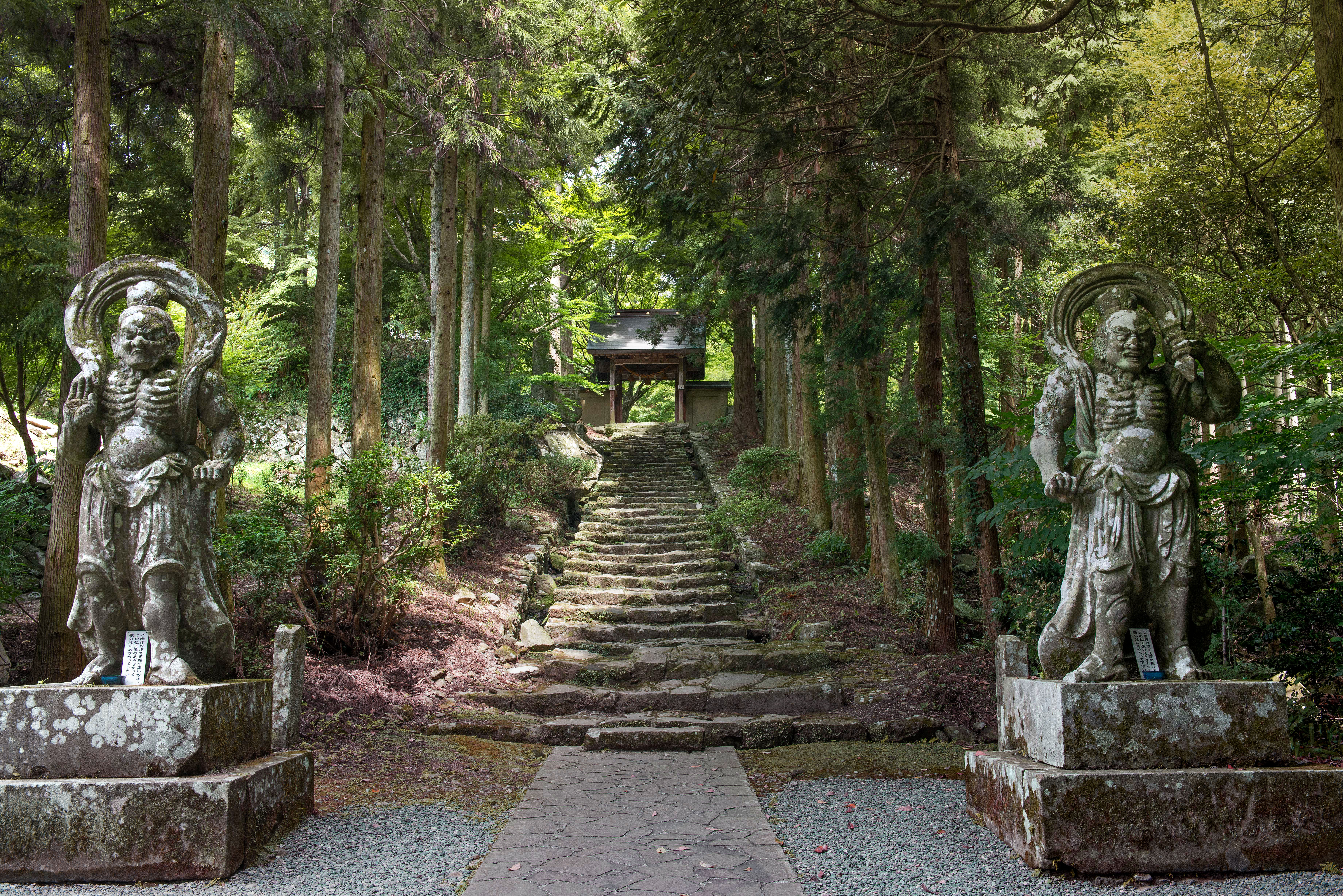The sense of antiquity on the Kunisaki Peninsula is immediate. There are those that believe the region — whose name is said to mean "land's end" — was created by demons in the service of powerful gods. You have to take these accounts with a pinch of salt, of course, as each explanation confidently contradicts the others, but there is a palpable atmosphere of mystery here, upon which the imagination thrives.
Between A.D. 700 and 800 the region gave birth to a syncretic cult — a mix of Tendai School Buddhism, Shinto and mountain worship — known as Rokugomanzan. A holy man called Ninmon is credited with founding 28 of the cult's temples on the peninsula, which became a training ground for devout worshipers. Futagoji Temple is an important space for this worship and sits in the very center of the peninsula, at its highest point, surrounded by spokes of metamorphic rock in the form of volcanic ridges and valleys. Futago means twins, and the temple receives visits from the families of such children, which may explain the lack of visitors: such offspring are relatively rare.
The temple's two stone Nio-sama statues (guardians of the Buddha) stand menacingly beneath a canopy of giant ceders at the foot of an ancient stone path. Rustic figures, such as these two statues, are difficult to date by sight. One rare case is a pair of Nio-sama at nearby Iwatoji Temple, where an inscription on one of the figures reads "1478." It is the closest we get to precise dating in a peninsula where time itself seems to have been put on hold.


















With your current subscription plan you can comment on stories. However, before writing your first comment, please create a display name in the Profile section of your subscriber account page.